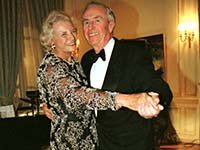

She retired at the age of 75, even though. The former justice, her own memory faltering, was diagnosed with the onset of dementia - “most likely Alzheimer’s” - a little more than four years later, Thomas writes. OConnor being sworn in as Supreme Court Justice by Chief Justice Warren Burger. Thomas writes that “Sandra adapted” - she sat down and held his other hand. When the demands of caretaking became too great a short time later, the family made the wrenching decision to move John to an assisted living facility.ĭuring a visit from his wife, John said, “Come meet my wife,” and then introduced her to another woman with whom he held hands. In January 2006, O’Connor stepped down from the court to care for her husband, who was suffering from Alzheimer’s disease. She said she just didn’t know if she could go through chemotherapy, that we had had wonderful times and she had had a good life and perhaps we should just let whatever happens happen.’”Ī short time later, Thomas notes, O’Connor “rallied.”Īppointed to the high court by President Ronald Reagan in 1981, O’Connor did not speak publicly of her cancer battle until an informal November 1994 talk to the National Coalition for Cancer Survivorship, an event captured in a C-SPAN video that Thomas cites in his book, published by Random House in March. “’SOC collapsed emotionally several times,’ John wrote. Upon her graduation she married a classmate, John Jay O’Connor III. She received undergraduate (1950) and law (1952) degrees from Stanford University, where she met the future chief justice of the United States William Rehnquist. The author also quotes from the journal John O’Connor kept and in which he referred to his wife as SOC. Sandra Day grew up on a large family ranch near Duncan, Arizona. “For three days (after being released from the hospital), she repeated what she had told John at the hospital, an incantation of sorrow and letting go, or trying to let go,” Thomas writes. However, a second biopsy revealed that the tumor was invasive and that a mastectomy followed by chemotherapy was in order.

Thomas recounts in “First” how O’Connor, then 58 and ready to begin her eighth high court term, was diagnosed in 1988 with a small, noninvasive tumor, treatable by removing the cancerous portion of the breast. Supreme Court’s first female justice, Evan Thomas pierces the steely demeanor Sandra Day O’Connor displayed on the bench for nearly a quarter-century to present her emotional turmoil when facing advanced-stage breast cancer and, later, the degenerative dementia of her husband, John, and then her own. Former Supreme Court Justice Sandra Day O’Connor, who stepped down from the court in 2006.


 0 kommentar(er)
0 kommentar(er)
